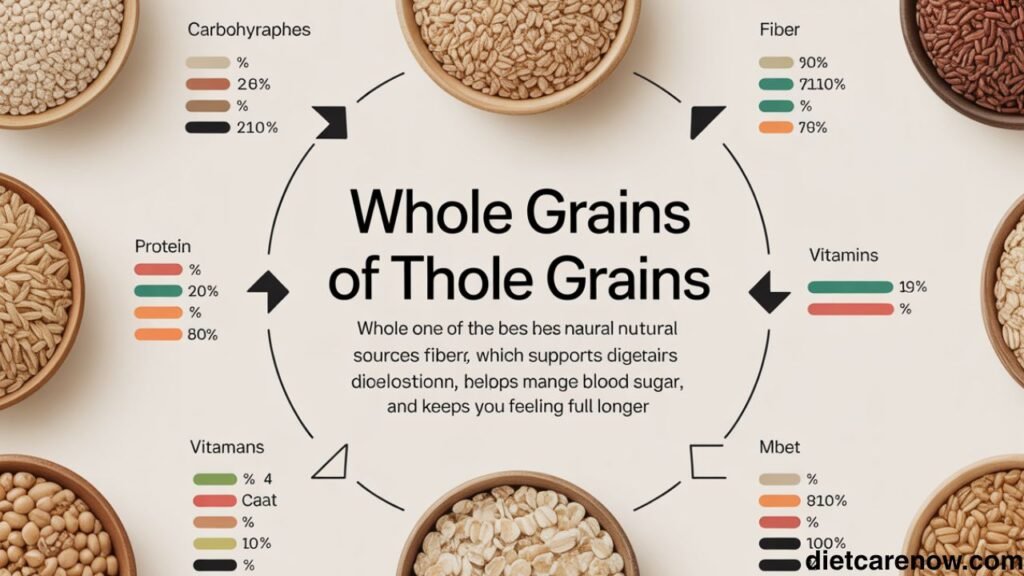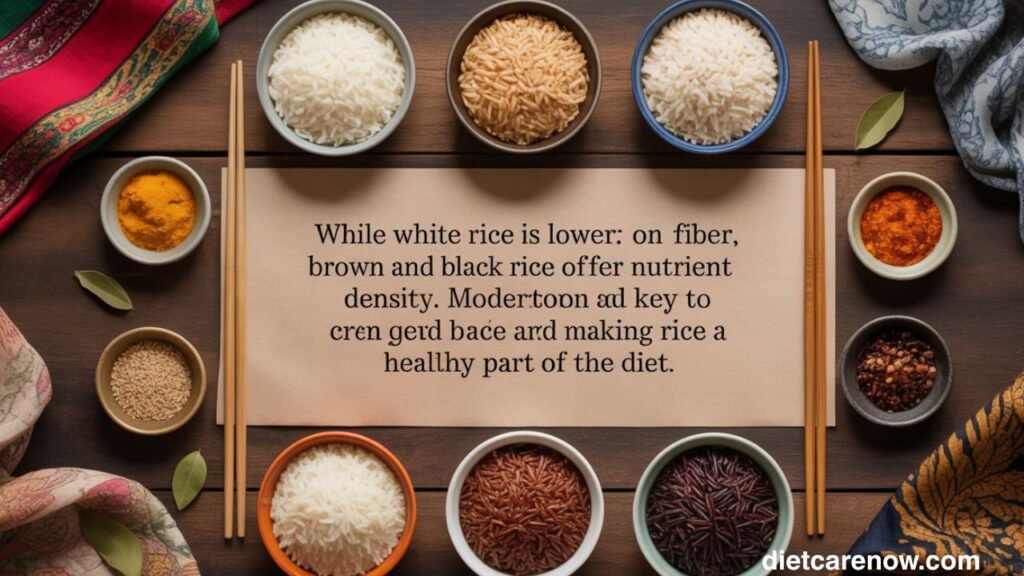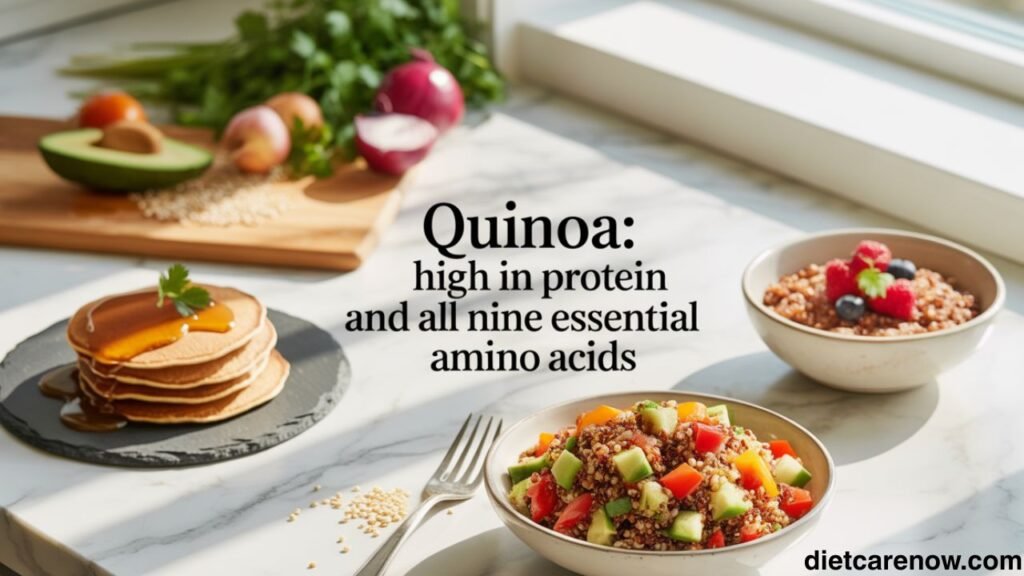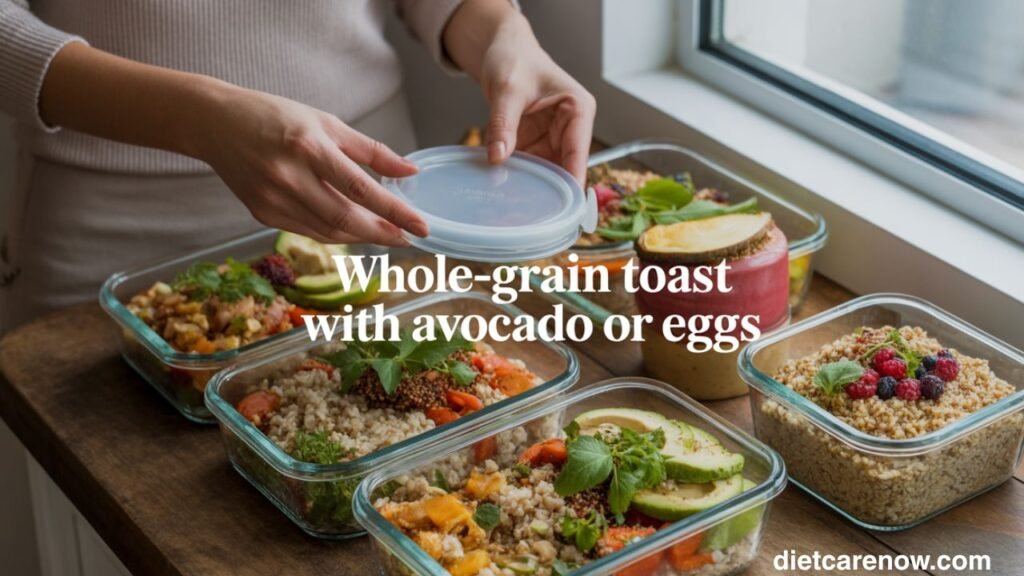Grains are among the oldest and most essential foods known to humankind. They form the backbone of diets in nearly every culture, providing energy, nourishment, and comfort in countless forms — from fluffy bread to hearty porridge.At their core, grains are small, hard seeds harvested from cereal plants like wheat, rice, corn, barley, and oats. They are packed with carbohydrates, plant-based protein, and a range of vitamins and minerals that make them a cornerstone of balanced nutrition.
Grain Power,Historically grains shaped civilizations. Ancient Egyptians thrived on wheat and barley; rice sustained Asian societies; and maize (corn) became the heart of Latin American diets. These humble seeds allowed communities to settle, grow, and trade — laying the foundation for agriculture itself.Today, grains continue to feed billions. They remain one of the world’s most reliable food sources, offering diversity, sustainability, and immense cultural importance.
The Nutritional Power of Grains
Grains aren’t just fillers on a plate — they’re nutritional workhorses. A single serving of grains provides an impressive range of nutrients that support energy production, brain function, and long-term health.
- Macronutrients:
Grains are primarily composed of carbohydrates, the body’s main energy source. Whole grains also supply plant-based protein, and though they’re low in fat, they often contain healthy unsaturated oils in the germ. - Vitamins and Minerals:
Most grains provide essential nutrients, including B vitamins (such as thiamine, niacin, and folate), iron, magnesium, and selenium. These nutrients aid in metabolism, cell repair, and immune function. - Dietary Fiber:
Whole grains are one of the best natural sources of dietary fiber, which supports digestion, helps manage blood sugar, and keeps you feeling full longer. - Health Benefits:
Including grains regularly in your meals can lower the risk of heart disease, reduce cholesterol, and support healthy weight management. Studies also suggest that whole grain consumption is linked to longevity and reduced inflammation.
Also read: /yoplait-lactose-free-yogurt/

Understanding Whole Grains vs. Refined Grains
Not all grains are created equal — and the key difference lies in how much of the grain kernel is kept intact.
What makes a grain “whole”?
A whole grain contains all three parts of the kernel:
- Bran: the fiber-rich outer layer
- Endosperm: the starchy middle layer that provides energy
Refined Grains:
When grains are processed to remove the bran and germ, they lose fiber, vitamins, and minerals. This refining makes grains softer and increases shelf life, but also reduces their nutritional value. Examples include white rice, white flour, and many breakfast cereals.
Whole vs. Refined Examples:
- Whole: Brown rice, whole wheat bread, oats, quinoa
- Refined: White rice, white pasta, pastries
Why Experts Prefer Whole Grains:
Whole grains are less processed, digested more slowly, and have a gentler effect on blood sugar. Nutritionists consistently recommend replacing refined options with whole grains whenever possible.
Common Foods in the Grain Category
Grains are incredibly diverse. While a few types dominate global diets, countless regional varieties contribute to cultural and culinary richness.
Common Global Grains Include:
- Wheat: The foundation for bread, pasta, and noodles
- Rice: A staple in Asia and Latin America
- Oats: Popular for breakfast and baking
- Corn: Eaten fresh, ground, or popped
- Barley: Used in soups, stews, and beverages
- Millet: A small, hardy grain prized in Africa and India
Beyond these, traditional grains like teff, sorghum, and spelt are gaining renewed attention for their sustainability and nutrition.
Wheat and Its Global Influence
Types of Wheat:
- Hard wheat: High in protein, ideal for bread
- Soft wheat: Lower in protein, used for cakes and pastries
- Durum wheat: Used for pasta and semolina
- Common Wheat-Based Foods:
Bread, pasta, cereals, crackers, noodles, and tortillas — wheat finds its way into every cuisine. - Nutrition and Gluten:
Wheat provides complex carbs, protein, and B vitamins, but it also contains gluten — a protein that helps dough rise but can cause intolerance in some people. For most, though, wheat remains a valuable source of nutrition and energy.
Rice: The World’s Most Consumed Grain
Rice feeds more people than any other grain on Earth. It’s especially vital in Asia, where it’s part of almost every meal.
Popular Varieties:
- White rice: Refined and easy to cook
- Brown rice: A whole grain with the bran intact
- Basmati and jasmine: Aromatic long-grain varieties
- Wild and black rice: Nutrient-dense and rich in antioxidants
- Cultural Importance:
Rice symbolizes abundance and prosperity in many traditions. From sushi in Japan to biryani in South Asia and paella in Spain, its versatility is unmatched. - Health Aspects:
While white rice is lower in fiber, brown and black rice offer higher nutrient density. Moderation and variety are key to making rice a healthy part of the diet.

Oats: The Heart-Healthy Grain
Oats have earned their place as a breakfast favorite — and for good reason. They are rich in beta-glucan, a soluble fiber that helps reduce cholesterol and supports heart health.
Common Types:
- Rolled oats: Flattened and cooked quickly
- Steel-cut oats: Coarser texture and nuttier flavor
- Instant oats: Pre-cooked for convenience
Health Benefits:
Oats promote steady energy, aid digestion, and may help regulate blood sugar. Regular consumption is linked to lower heart disease risk and improved gut health.
Corn and Its Versatility
Corn is unique because it serves as a grain, a vegetable, and a key ingredient in many products.
- Corn-Based Foods:
Popcorn, cornmeal, tortillas, polenta, and cornbread are everyday staples in various cuisines. Corn is also used in breakfast cereals, snacks, and sweeteners. - Nutritional Value:
Corn provides fiber, vitamin C, and antioxidants like lutein and zeaxanthin, which support eye health. However, some processed corn products are less nutritious, so whole forms like popcorn or polenta are better choices. - GMO Concerns:
A large percentage of corn grown globally is genetically modified. Choosing organic or non-GMO corn is an option for those who prefer natural varieties.
Barley and Millet: Ancient Grains Making a Comeback
Both barley and millet are among the oldest cultivated grains, valued for their resilience and health benefits.
- Barley:
High in soluble fiber, barley supports heart health and helps manage cholesterol. It’s commonly used in soups, stews, and malted beverages. - Millet:
Naturally gluten-free and rich in magnesium, millet provides slow-releasing energy and is popular in porridges and flatbreads. - Sustainability:
These grains thrive in dry climates and require fewer resources, making them environmentally friendly crops that support food security.
Pseudograins: Quinoa, Amaranth, and Buckwheat
Pseudograins look and cook like grains but come from different plant families. Despite the name, they’re nutritional powerhouses.
Key Features:
- Quinoa: High in protein and all nine essential amino acids
- Amaranth: Rich in iron, magnesium, and fiber
- Buckwheat: Gluten-free and packed with antioxidants
These grains are excellent for people avoiding gluten and are great in salads, porridge, or baking. Their growing popularity is also helping diversify diets globally.

Health Benefits of Including Grains in Your Diet
Grains do more than fill you up — they actively support long-term wellness.
- Heart Health:
Whole grains help lower LDL (“bad”) cholesterol and reduce the risk of cardiovascular diseases. - Weight Control:
Fiber-rich grains increase satiety, helping manage calorie intake naturally. - Blood Sugar Management:
Whole grains slow carbohydrate absorption, stabilizing blood sugar levels. - Digestive Health:
Fiber aids in regular bowel movements and supports beneficial gut bacteria.
Myths and Misconceptions About Grains
Grains often get unfairly criticized, especially in low-carb diet trends. Let’s clear up a few common myths:
- “Carbs are bad.” Not true. Complex carbs from whole grains provide essential energy. It’s refined carbs that can cause blood sugar spikes.
- “Grains cause inflammation.” There’s no solid evidence for this in healthy individuals. Whole grains, in fact, have anti-inflammatory properties.
- “Everyone should avoid gluten.” Only people with celiac disease or gluten sensitivity need to avoid it. For others, gluten is safe.
How to Incorporate Grains Into Daily Meals
Adding grains to your diet doesn’t have to be boring or complicated.
Breakfast Ideas:
- Oatmeal with fruits and nuts
- Whole-grain toast with avocado or eggs
- Quinoa porridge with honey and cinnamon
Lunch and Dinner:
- Brown rice with grilled vegetables
- Barley soup or millet salad
- Whole wheat pasta with tomato sauce
Snacks:
- Air-popped popcorn
- Homemade granola bars
- Rice cakes with nut butter

Gluten-Free Grain Alternatives
For those with gluten intolerance or celiac disease, there are many delicious options beyond wheat.
Top Gluten-Free Choices:
- Rice
- Quinoa
- Buckwheat
- Sorghum
- Teff
Cooking Tips:
Use these grains in salads, soups, or as a base for baked goods. Mixing textures and flavors makes gluten-free eating more enjoyable.
Conclusion: Celebrating the Diversity of Grains
Grains have sustained humanity for millennia — and they continue to nourish, comfort, and connect us across cultures. From humble barley to trendy quinoa, each grain brings something unique to the table.
Incorporating a variety of grains into your diet isn’t just about nutrition. It’s about honoring nature’s diversity and choosing balance over restriction. Whether you prefer rice bowls, hearty bread, or creamy oatmeal, grains remind us that healthy eating can be simple, satisfying, and sustainable.

